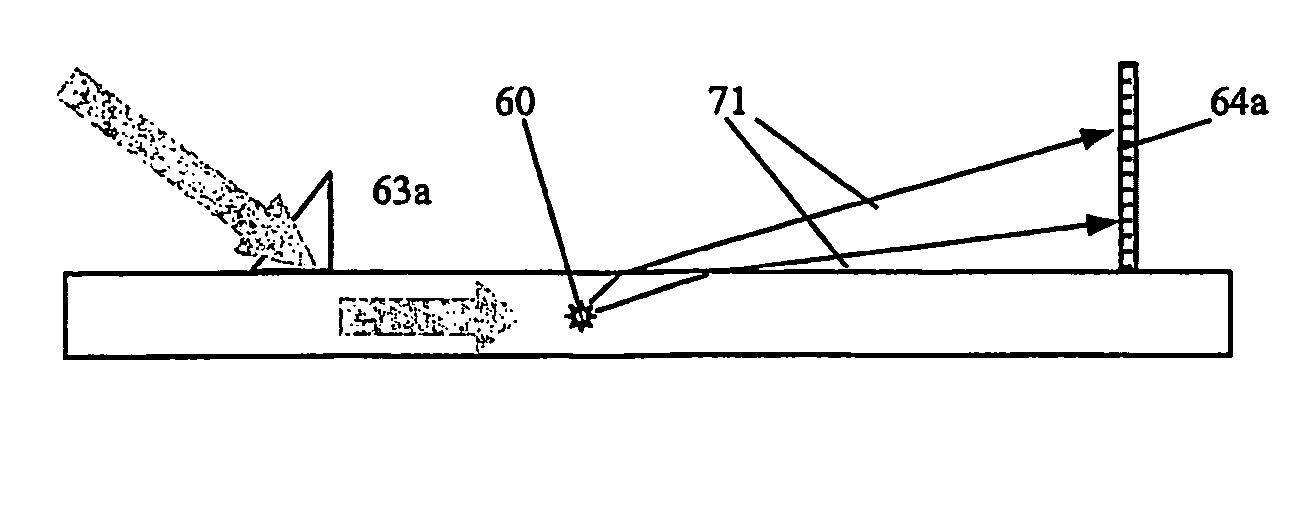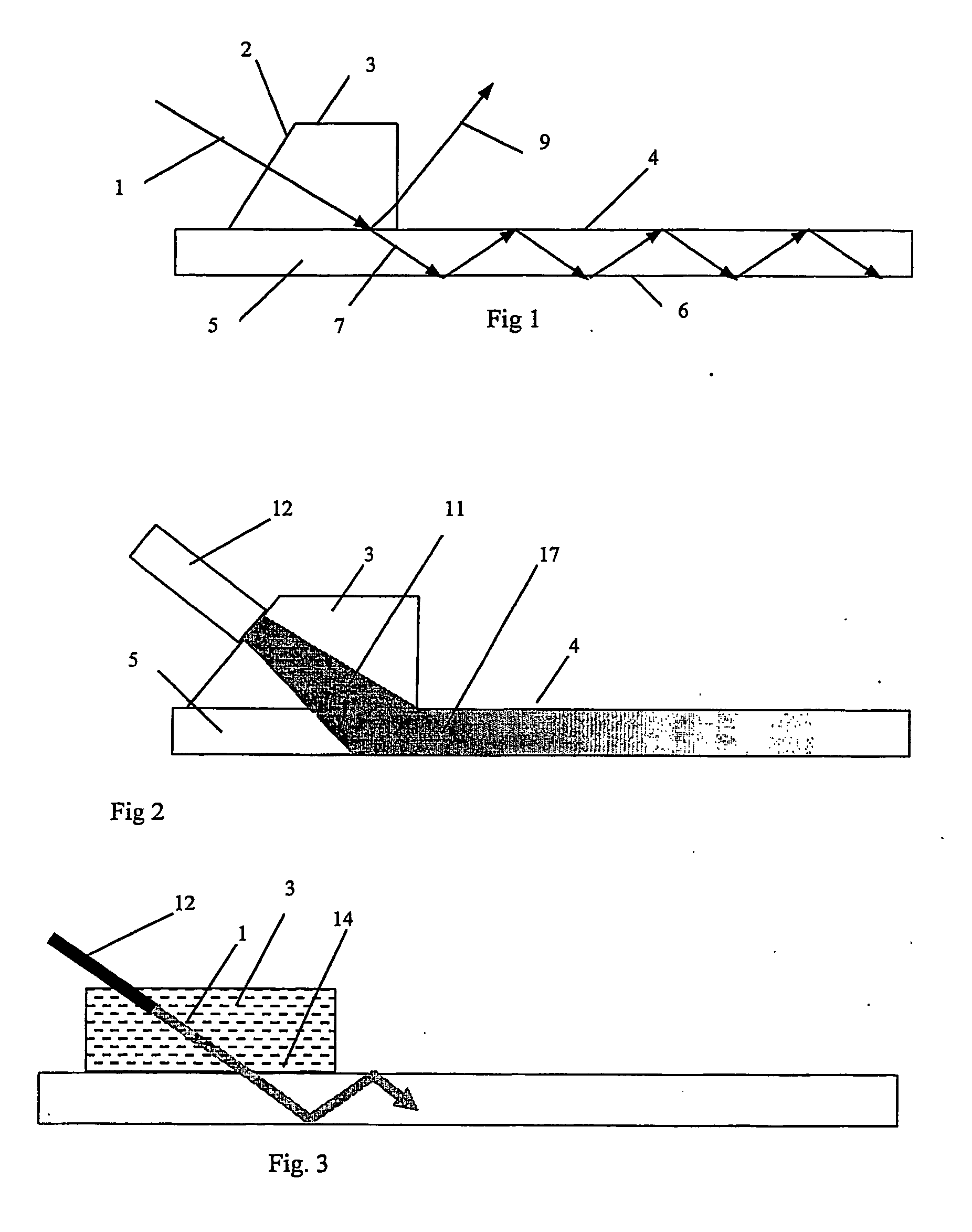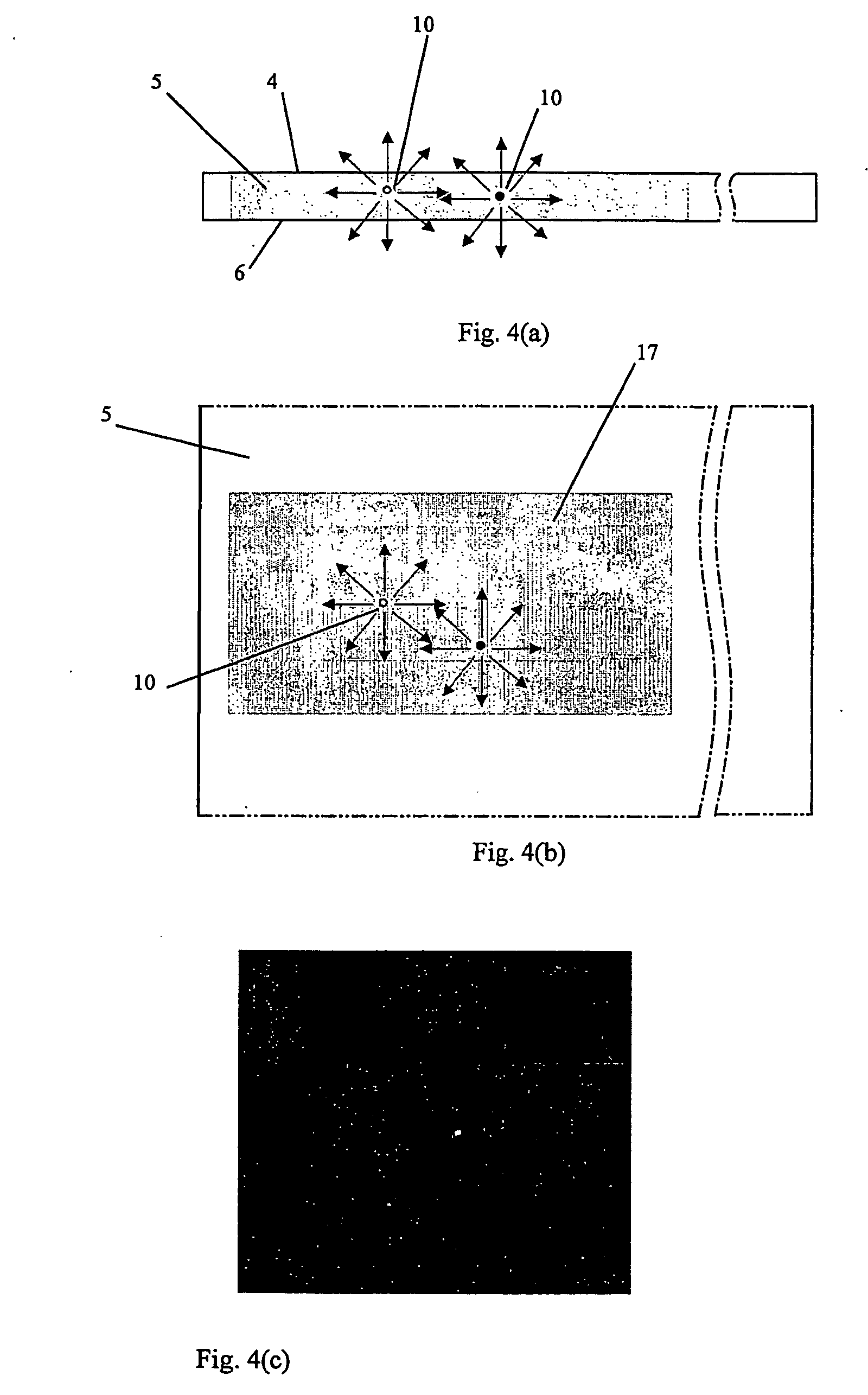Method and apparatus for detection of inclusion in glass
a technology of inclusion and glass, applied in the direction of scattering properties measurement, measuring devices, instruments, etc., can solve the problems of glass shattering with potentially disastrous consequences, glass panel inclusions and other defects, and high process speed, so as to achieve high efficiency of input light use, high absorption coefficient, and high efficiency of use of input light energy
- Summary
- Abstract
- Description
- Claims
- Application Information
AI Technical Summary
Benefits of technology
Problems solved by technology
Method used
Image
Examples
second embodiment
[0041] Alternatively, or additionally, the interface can include a liquid layer between the interface element 3 and the glass panel 5. The liquid may for example be water. This too increases the total contact area (i.e. reduces the possibility of air gaps between the interface and the glass panel 5). Furthermore the liquid may lubricate the contact between the interface element 3 and the glass panel 5, thereby making it easier to move the interface element 3 when it is desired to inspect a different area of the glass panel 5. This possibility is illustrated in the invention shown in FIG. 3. In this case the light source 12 is embedded in the interface element 3 (which does not have a prism-shaped cross-section). A layer 14 of liquid is present between the interface element 3 and the glass panel 5. A mechanism (not shown) can be provided for refreshing this liquid layer 9 (e.g. a reservoir and a pump for moving liquid from the reservoir from the pump). Water is preferred as the liqui...
fourth embodiment
[0061] Whereas in the embodiments described above, the interface element 3 was generally prism-shaped in cross-section, it may alternatively be provided as a flexible sheet of deformable material (e.g. silicon rubber). Such the invention is shown in FIG. 7. The incident light beam 1 from the light source (not shown) enters one end of the interface element 33, and then propagates within it as a beam which is total internal reflected whenever it encounters the faces of the sheet 33 at a location where that surface is not in contact with the glass panel(in a way similar to the propagation of the light within the glass panel 5 in the embodiments described above).
[0062] When the beam 1 reaches a part of the interface element 33 which is touching the glass panel 5, the conditions for TIR no longer apply, because the difference between the refractive indices of the interface element 33 and the glass panel 5 is too low. Thus, the light passes into the glass. When the refractive indices of t...
PUM
| Property | Measurement | Unit |
|---|---|---|
| relative refractive indices | aaaaa | aaaaa |
| relative refractive indices | aaaaa | aaaaa |
| refractive index | aaaaa | aaaaa |
Abstract
Description
Claims
Application Information
 Login to View More
Login to View More - R&D
- Intellectual Property
- Life Sciences
- Materials
- Tech Scout
- Unparalleled Data Quality
- Higher Quality Content
- 60% Fewer Hallucinations
Browse by: Latest US Patents, China's latest patents, Technical Efficacy Thesaurus, Application Domain, Technology Topic, Popular Technical Reports.
© 2025 PatSnap. All rights reserved.Legal|Privacy policy|Modern Slavery Act Transparency Statement|Sitemap|About US| Contact US: help@patsnap.com



